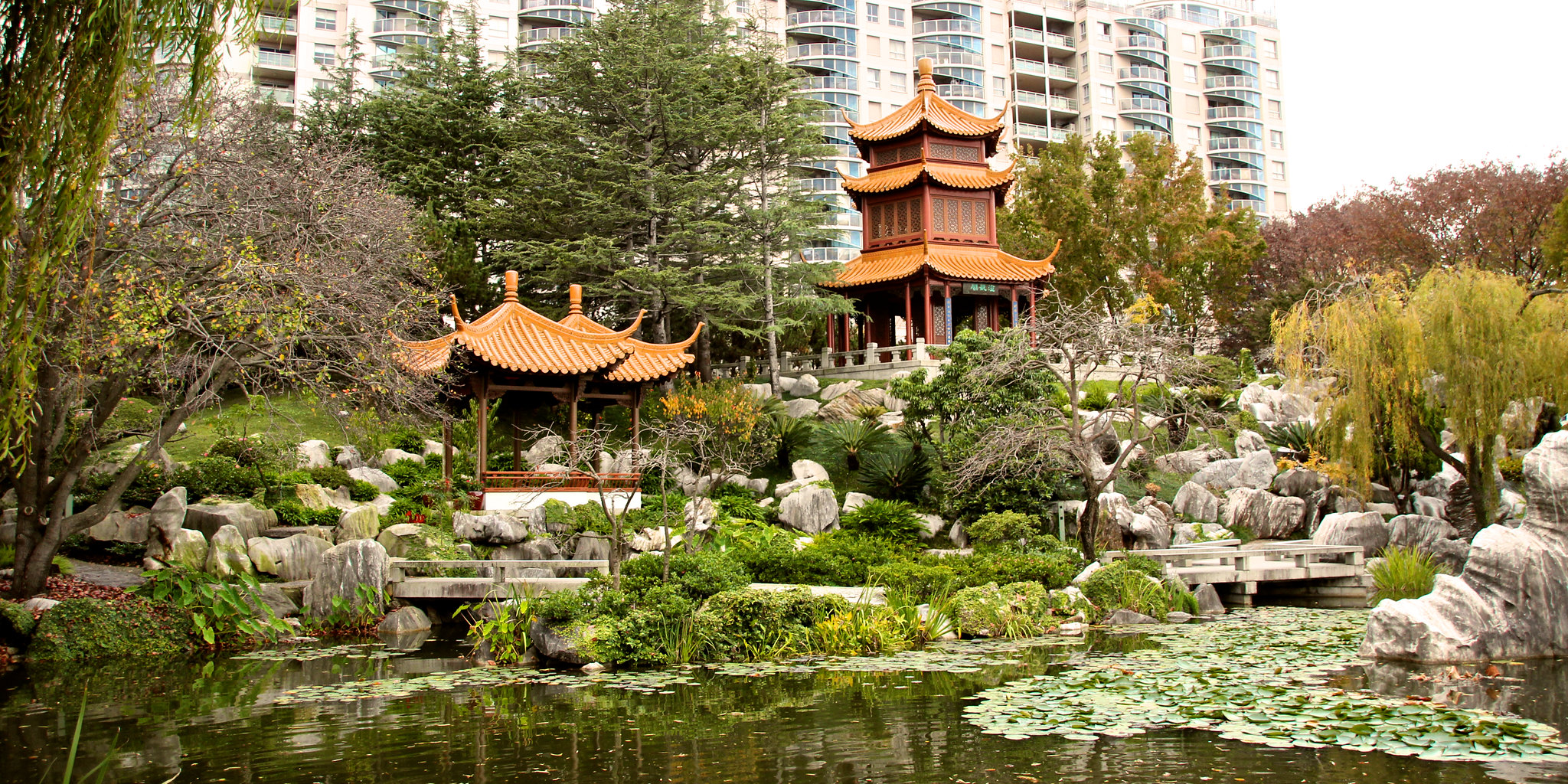The Dictionary of Sydney was archived in 2021.
Chinese Garden of Friendship
Citation
Persistent URL for this entry
To cite this entry in text
To cite this entry in a Wikipedia footnote citation
To cite this entry as a Wikipedia External link
Chinese Garden of Friendship
[media]In China, gardens evolved after the fifth century, when they had been the province of royalty and the wealthy class. In contemporary China, they bring the serenity of nature to crowded noisy cities, often in tiny spaces artfully designed to create illusion and unexpected vistas. They are based on the principle of yin and yang, the balancing of opposites. The essence of nature is distilled in the arrangement of rocks, pools, pavilions and waterfalls, creating a journey to satisfy both sensual and intellectual appetites.
Very few public Chinese gardens have been created outside mainland China, but Sydney's Chinese Garden at Darling Harbour celebrates the sister state relationship between Guangdong province and New South Wales. It was a gift for the 1988 Bicentennial celebrations and is an important cultural site for the local Chinese community, with cultural and visual links to nearby Chinatown.
[media]The Chinese Garden was built on the site of the New South Wales Fresh Food and Ice Company, adjacent to the Darling Harbour railway yards. Under Thomas Sutcliffe Mort and the engineer Eugene Dominique Nicolle, this company had developed refrigeration technology, thus dramatically changing Australia's eating habits as well as the dairy and meat export industries. The remaining buildings were demolished in 1985.
[media]When Darling Harbour was being redeveloped as a Bicentennial project, Sydney's Chinese community advocated the inclusion of a traditional garden. A site of about one hectare (2.5 acres) was allocated and, in December 1984, the Guangdong Landscape Bureau in Sydney's sister city, Guangzhou, agreed to design the garden according to ancient landscaping principles. A formal agreement in October 1985 recognised it as a joint government project to be undertaken by a combination of Chinese and Australian craftspeople and artisans. The architect was Henry Tsang, then deputy mayor of Sydney, and work began with a ceremony on 16 March 1986. On 17 January 1988, in one of the highlights of the Bicentennial celebrations, representatives of both governments formally opened the Chinese Garden, one of the largest outside Asia.
[media]The Chinese Garden is divided into distinct areas, defined by gates, bridges, winding paths and carp-filled water lily ponds. Two Chinese lions guard the entry pavilion leading to the Hall of Clear Shade and the Courtyard of Welcoming Fragrance. These, together with the Commemorative Pavilion, Hall of Longevity and the Lenient Jade Pavilion, create the first of six scenic areas. The remaining zones are the Pavilion among Bamboo and Rock, the Hill, Creek and Waterfall, the Gurr and the Mountain Peak, the Rock Forest and Wilderness, and the Boat and Tea House. The graceful interconnected buildings of the Twin Pavilion and the Gurr are a gift from the people of Guangdong. Bricks, tiles, granite features and ceramic grilles and reveals were all recovered, manufactured or crafted in China. The overall effect of the delicate juxtaposition of elements is one of tranquillity, a peaceful refuge in the middle of a busy city. A barren car park has been transformed into a fertile landscape, based on the harmony between water, plants, rocks, and buildings.[media]
[media]In February 2006, the Sydney Harbour Foreshore Authority, the successor to the Darling Harbour Authority, embarked on a $1.6 million renovation of the garden. They sought the advice of feng shui expert Howard Choy. The original design was maintained but the teahouse with its traditional brews was relocated from its upstairs location, a new café was added and other improvements enhanced access and layout. Tucked away in a southern corner of Darling Harbour, the revamped garden remains an oasis of calm not only for tourists but for thousands of nearby office workers.
References
Chinese Garden of Friendship, Self-guided teacher resource pack
Lorna Rose and Gay Colliton, 'The Garden of Friendship', colour photos and plans, State Library of New South Wales, Mitchell Library, 712.5099441/3
Linda Silmalis, 'Chinese gardens in $1.6m revamp', Sunday Telegraph, 15 May 2005
Sydney Harbour Foreshore Authority, Chinese Garden of Friendship, 26 June 2008
Jacqui Taffel, 'Old faithful: Chinese Garden of Friendship', Sydney Morning Herald, 20 Nov 2004








